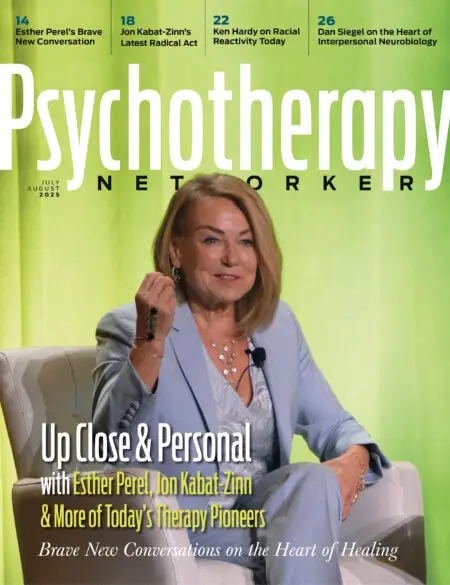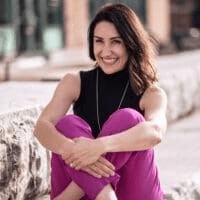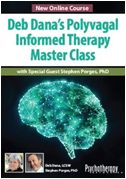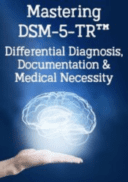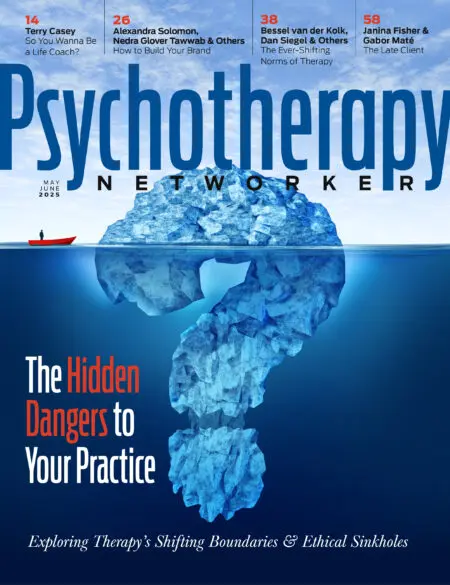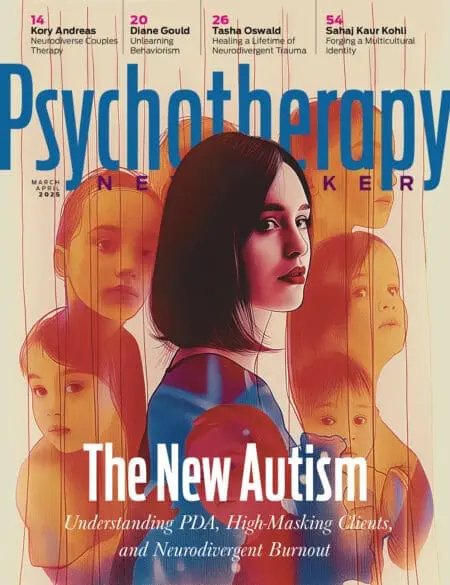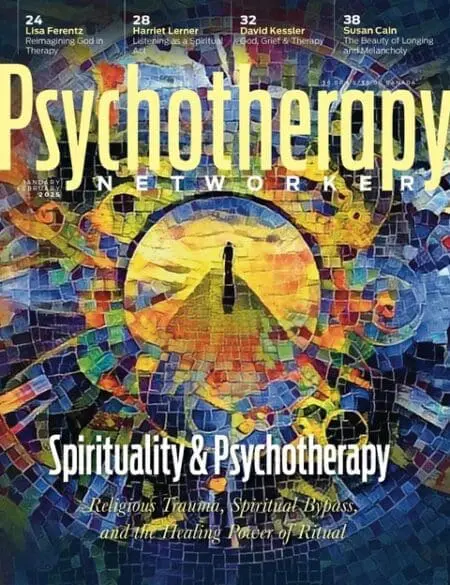Anne, a mom of two, corporate executive by day, spinning and yoga instructor by night, joins me in my virtual therapy room for her third session of an adult autism assessment. Her ocean-blue eyes meet mine just long enough to exchange pleasantries before shifting away to look somewhere just offscreen. The relief on her face was palpable a few weeks ago, when I assured her that eye contact wouldn’t be necessary during our sessions.
Divorced twice, she’s overwhelmed by the social dynamics of her high-powered job and struggles with the nuanced communication expected in adult relationships. Anne greatly values her time with her childhood best friend, who makes her feel like she can unapologetically be herself, but few other relationships seem worth the effort. Parenting comes naturally to her, but these days, Anne finds her marriage unfulfilling. She quietly admits that she prefers solitude and the company of fictional men in books and movies to the reality of her husband.
The best, and sometimes most frustrating, part of my autism is how my pattern-seeking brain tends to replay sessions on a loop, cataloging my clients’ words and filing them away by themes or phrases. Early on, I recognized Anne’s narrative in the experiences I’m accustomed to hearing from so many of my late-diagnosed Autistic clients. This “modern” autism isn’t the visible, predictable version that once led parents of stereotyped young boys to question vaccine schedules. It’s the neurodivergence of high-masking adults hidden in plain sight—in boardrooms, art studios, tech meetings, and academia. And it continues to elude many mental health professionals in 2025.
In the final moments of our session, Anne jumps off script, “I’m not even sure if this is relevant,” she says, “but I feel like I should tell you that I’ve struggled with some eating issues since middle school.” This is the fourth disclosure of disordered eating I’ve heard from a neurodivergent woman this week, a pattern that, by now, feels both unsurprising and deeply personal.
Anything but Neurotypical
Anne’s complicated relationship with her body began at age 11, when her “extremely rigid,” fat-fearing mom enrolled her in Weight Watchers. “I developed an unhealthy interest in dieting, calorie counting, and exercise practically overnight,” she recalls. “I tend to take things and run with them.”
She quickly memorized the points, calories, and nutritional facts of every food she encountered. Within days, Anne showed a startling aptitude for gaming the system of food intake to uphold the rigid structures her mother valued. She recounts years of struggling with body image issues, obsessive eating and exercising, and failed attempts to manage compulsions to control a body that never seemed quite right.
In her 30s, Anne says she’s “obsessed with wellness, but not always well.” She explains, “I don’t enjoy going out to eat because I’m consumed by the fact that I don’t know how many calories are in the food. I try to teach other women how to listen to their bodies, but honestly, I’ve never been able to trust my body. I don’t know when enough is enough, with food, exercise, anything. I can’t do anything in a small way. I become obsessed with any exercise I do. The numbers on the scale, the calories, the structure, it all feels like information my body doesn’t know how to provide me with.”
Anne’s words land on me as a full-body tingle, born of validation and shame. I’ve also been a walking encyclopedia of nutritional facts since my first diet and my first encounter with “points” and food-counting apps. There’s an irony here: autism, which so often isolates us, has brought Anne and I together in this moment of shared interests neither of us wanted. I shift in my chair, feeling the connection as well as a familiar sense of sadness. Beyond the difficulty of disordered eating and autism, there’s the deeper tragedy of a system that continues to fail us.
Although I’d love to claim absolute peace with my body and my neurodivergence, we’ve all been steeped in a culture that teaches girls—however they look and process the world—to hate themselves long before they can even vote. Everywhere you turn, there are books, apps, programs, and workouts that promise to help you fit impossible cultural standards, and those tools happen to bring a sense of order and fleeting relief from the chaos of not being able to “simply know” what your body needs.
Years ago, a 5 a.m. Pure Barre class became my daily ritual. Missing even one class felt like it threatened to the entirety of my human balance. Before that, the Whole 30 diet transformed food into a system of “good” and “bad,” a structure my neurodivergent brain clung to. The diet reshaped my body in weeks, but more than that, it offered the illusion of control. Eliminating choice felt like freedom—from digestive issues, bloating, discomfort from binging, and the constant burden of feeling like I was “wrong” in my body. But these frameworks, no matter how soothing in the moment, only intensify my obsessive tendencies and the unhealthy relationship between my Autistic brain and my never-quite-right body.
I explain to Anne that the intersection of autism and disordered eating, though common, is often misunderstood in therapeutic spaces. Themes of identity struggles, generational trauma, rigidity, and black-and-white thinking are factors of the Autistic experience that tend to get overlooked by well-meaning helpers. Unfortunately, many eating disorder specialists aren’t prepared for the unique challenges of eating disorders paired with neurodivergence.
Because Autistic bodies are so sensitive to their environments, stressors, and even medication, treatment must first focus on finding nervous system equilibrium before addressing their relationship with food. Attempts at behavioral change in an unregulated nervous system can predictably fall flat. In addition, not all eating behaviors need to be changed: after all, just as Autistic people have different but valid ways of socializing, many of us have different but legitimate ways of eating.
Middle School, Maturing, and Masking
One key detail that’s critical to our understanding of both high-masking autism and eating disorders lies in the social demands of the teen years. The collision of mounting social pressures with sensory sensitivities emerging from awkward, maturing bodies often result in an intense struggle with confusing identity expectations. Without support, Autistic middle schoolers can experience a rapid, downward spiral with long-term, dangerous consequences. For Autistic trans teens, the stakes are even higher, as gender dysmorphia adds additional layers of complexity to their struggle to assimilate.
Xander, a 27-year-old transmasculine Autistic PDAer exemplifies how these struggles can persist into adulthood. PDA (Pervasive Drive for Autonomy) is a profile of autism characterized by intense nervous system responses to a perceived loss of autonomy. For PDAers, being forced to eat can activate dangerous fight, flight, or freeze responses preventing meaningful engagement in treatment. Outward behaviors may mirror avoidance, defiance, or unwillingness to participate in treatment, but at the core, the dysregulated nervous system is in desperate need of support.
Prior to his autism diagnosis, Xander cycled through four inpatient and two outpatient eating disorder programs. These treatment programs all labeled him “noncompliant” and documented his “refusal” to eat, “refusal” to share his feelings, and “refusal” to participate in groups as his refusal, not ever recognizing that his nervous system was resisting, not him. The overwhelming social and sensory stressors of forced group therapy and rigid protocols ignored his needs as an Autistic, trans man with trauma. During my collaboration with his treatment team, I suggested that the factors at play for Xander were far more complicated than their assumption that his avoidance was “his eating disorder talking.”
For therapists to support clients in the margins of multiple at-risk groups, we need help recognizing the factors shaping their particular clinical picture. Characteristics of autism, such as sensory sensitivities, interoception challenges, a reliance on “data,” a need for predictability, and family histories of undiagnosed neurodivergence influence disordered eating experiences. Comorbidities like avoidant/restrictive food intake disorder (ARFID), PDA, and OCD complicate these cases, making standard treatment approaches ineffective and even harmful.
To innovate new ways of supporting neurodivergent people, we must take into account how their brains and bodies work, what their nervous systems need to stay regulated, and what healthy eating looks like for each individual (which may be atypical).
Why Traditional Treatments Fall Short
Food is experienced through the senses, and sensory sensitivities are common for Autistic people. Many cling to the “beige foods” like chicken nuggets, boxed pastas, snack foods, and processed foods, which offer a perfect score in predictability despite falling short in the nutrition department. A cracker never surprises you like a sour blueberry or a chicken finger that’s “too chicken-y.”
But the sensory experience doesn’t stop at taste. Foods have textures, smells, sounds, and sliminess. To eat is to experience all the senses, which is why many Autistic individuals struggle with varied eating, and some may even be diagnosed with ARFID. Autistic people with ARFID will often reflexively refuse new foods before they’ve attempted to try them. Even the suggestion of new foods can lead to a full-body nervous system reaction. In cases of ARFID, we often have to rethink standards around eating and nutrition and accept that, as they say with infants, fed is best.
Many Autistic people also struggle with the ability to sense internal bodily cues like hunger, fullness, or thirst. This is due to a breakdown of interoception, the ability to sense and make meaning of body sensations. For some, a migraine is the first signal of thirst, lightheadedness the first clue of hunger. This disconnect can lead to eating past fullness, forgetting to eat altogether, or being unable to recognize what’s enough. “Being full or hungry only happen in the extremes,” Tina, a 29-year-old teacher, explains. “I’m either starving and feel like I’m going to die, or so full that I feel like I’ll explode. There’s no in between.”
Elle, my 35-year-old client, once said, “To me, intuitive eating isn’t real. I don’t feel full. I’d eat whatever was on my plate because that was the rule as a kid. People were constantly commenting on how much I ate, but I thought I was following the rules. Even now, I’m like, just tell me what the hell to eat, and I’ll do it. My body is no help in that area.” Teaching Autistic people to “listen to their bodies” only reinforces the traumatic reality that the instincts most people take for granted don’t align with their neurodivergence.
The act of eating is physically demanding, but for Autistic people with sensory sensitivities, it can be emotionally overwhelming. Textures, tastes, smells, and temperatures intensely shape how Autistic bodies experience food, turning mealtimes into stressful events. Predictability can help create a sense of safety, but that may mean eating the same foods, adhering to strict mealtimes, or following specific preparation methods to soothe an otherwise overwhelmed brain. Disruptions to these routines, such as skipping a meal or encountering an unexpected menu, can feel catastrophic. Plus, the sensory needs of Autistic people can change unpredictably, easily turning “safe foods” into “unsafe foods” and creating rigidity around food that’s often mistaken for disordered eating when it’s actually a form of sensory accommodation.
“I have an entire cupboard of food I won’t touch,” 23-year-old Sam tells me. “I’m supposed to eat a variety of things each day, but I can’t do that. The foods I eat have to be the right texture. If I have it in my mind that I’m going to eat ‘something else’ and don’t succeed, I sometimes kick, scream, and even hit myself in the head. I know I should be able to just eat ‘something else,’ but my brain was expecting pancakes. The shame of being an adult who has meltdowns over pancakes consumes me. The only option I have is to sleep it off and try again the next day.”
Numbers provide a sense of control and certainty in an otherwise unpredictable world, but for many Autistic people, data points like calories, macros, weight, or meal schedules can quickly shift into rigidity or obsession when those numbers become the only way to feel safe. Rather than forcing intuitive eating or eliminating these frameworks altogether, therapists can focus on helping Autistic clients create healthier relationships with data, introducing adjustments to how they can track numbers in ways that allow clients to put their efforts in the right places. Tracking weight fluctuations many times a day can halt progress, whereas a visual badge system for movement each day can adjust the data points to a healthier focus while allowing data collection and planning to continue.
To truly support high-masking Autistic adults requires providing them with increased autonomy, freedom to accommodate sensory and food preferences, and a move away from rigid adherence to neurotypical norms around food and body image. Helping clients trust themselves, rather than simply expanding their “beige diet,” is a key step in fostering meaningful change. For Autistic clients in treatment, accommodations are key, like accommodations to opt for individual reflection over groups, writing over talking, and safe foods over food challenges. Above all, nervous system safety and sensory needs should remain the focus. With support and understanding of the ways that Autistic brains crave predictability and data seeking, we could offer a realistic pathway to success for clients in the intersection of eating disorders and autism.
From Black and White to Balance
Anne has taken the last six months to digest her autism diagnosis. She arrives for a Friday morning check-in session with wet hair and matching athleisure. “So I’m guessing you can tell I just got back from the gym.”
“I see that! Spinning today?
“No, Pilates.”
The tab next to Anne’s video chat blinks red on my computer: it’s a message from a gym owner offering me a “deal” on an overpriced, professional Pilates machine. I try not to laugh at the timing.
Underneath the healthy and unhealthy eating, the overexercising, the counting, intensity is the familiar thread for both Anne and I. Seeing this as a feature of our neurotype, not a bug, is the beginning of learning to trust our brain, accept our body, and find a way to “feed” intense interests in ways that serves us. Anne is excited to update me on her progress.
“Tonight, I’m going out to dinner with friends. I picked the restaurant and the table in the back, where it’s quiet. I’ve really been trying to enjoy the social time with friends, and knowing where we’re going and what I’ll eat helps. I’ve already planned my dessert.”
“You know I love this plan, Anne,” I tell her. “It sounds like you’re accommodating what your brain needs to enjoy this.”
“Yeah, and I decided no more than two gym classes a day. Exercise is my favorite special interest, but two classes does feel better than five now that I’m checking in with my body more.”
Anne and I also catch up on her other efforts to unmask, including her request to telework more, and her disappointment in friends who’ve been less than interested in her new Autistic identity. Unmasking isn’t easy.
“I’ve been spending a lot of downtime reading the autism books you recommended. It’s been validating to learn about my brain, and I’ve gotten pretty obsessive about it. Maybe that’s helped me chill with the exercising a bit,” she jokes.
I’m proud of Anne. She has a glow about her today beyond her post-gym, rosy face. She’s working on accepting her intensity and “portioning it out” among all of her interests. When we say goodbye, I hit the big, blinking x on the adjacent tab. Let’s be honest, I don’t need a Pilates machine.
Kory Andreas
Kory Andreas, LCSW-C, is a clinical social worker and Autism specialist devoted to supporting neurodivergent individuals through assessments, therapy, and education. A late-diagnosed Autistic adult, she consults with government organizations, mental health treatment facilities, and therapy practices to equip them with strategies for fostering truly inclusive and neurodivergent-affirming environments. You can connect with Kory on Instagram @neurokoryous or through koryandreas.com.
